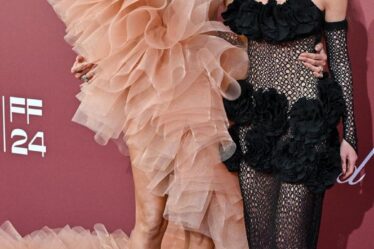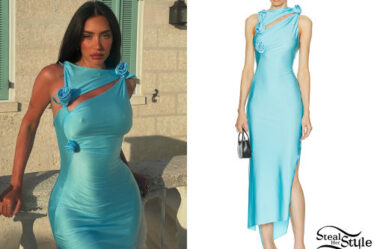
Hi! I’m Madison and this is the first edition of It Happened Online.
It’ll be quick. It’ll be fun. It’ll make you the most internet-savvy member of your group chat. (Probably!)
I got my verified Twitter check mark about eight years ago while working as a cub reporter at a digital news outlet. I did nothing to earn it other than show up to work one day and oh, hey, would you look at that! I’m verified. Sweet!
(Technically, the check mark was white, surrounded by blue, but colloquially they’ve become known as blue checks and I’m not about to squabble over semantics at this stage of the game.)
It feels a little pathetic to reflect on how excited I was about getting my check mark back then, but this was still the era where digital journalism was fighting to be taken seriously. Getting that check gave me credibility. It made my tweets, and subsequently my work, more likely to be seen.
When I got home from work that day, my roommates presented me with cupcakes they’d frosted with check marks, and a balloon that read “It’s a verified Twitter!”
Forgive me, it was 2015.
Last week, after much throat clearing, Twitter started removing the check marks from so-called “legacy verified” accounts — the ones for which Twitter had confirmed the identity of the owner and operator.
Now, anyone can be “verified” on Twitter for $8 a month.
By the time Elon Musk announced these changes, a blue check was nothing to be proud of. Callie Holtermann, who will be helping me write this newsletter, reported this week that some users are calling it “the dreaded mark” or that “stinking badge.”
The icons make users appear “desperate for validation,” according to the rapper Doja Cat. Twitter also restored blue checks for popular Twitter users who didn’t want them, including LeBron James, Bette Midler and Stephen King. Chrissy Teigen called her blue check a form of “punishment.”
I would argue that the blue check was never as covetable as Elon Musk thought it was. (He has called it a “lords & peasants system.”) For me and many other journalists, it was essentially just a tool to prove to sources I was who I said I was. No different than a press badge or a business card.
Why should anyone care about the check-mark changes, especially if their job doesn’t involve sliding into DMs? Twitter’s previous system wasn’t perfect, but it did make it easier for users to figure out if tweets were coming from a real person or organization, or, say, from an account pretending to be Eli Lilly and promising free insulin for all. (This really happened in November 2022, tanking the company’s stock.)
Now users will have to work harder to make sure people are who they purport to be. I can attest it’s harder than it sounds.
But, hey, that’s not to say Elon Musk’s new system isn’t useful in its own way. The new check marks have instead become an inversion of the old. If I see you have one, I immediately don’t care what you have to say.
“If I Were a Fish”
That’s all for serious internet news this week. I did just promise this newsletter would be fun. So here’s truly the most delightful thing I’ve seen online in a hot minute. Watch it and let the joy wash over you.
How did this charming song come to be? I talked to its creator, Corinne Savage, a Nashville-based musician known as Corook.
“I was kind of grieving a lot of feelings of being out of place, not having a community, not fitting in any boxes, whether it be the kind of music that I make or the fact that I’m nonbinary,” Corook said. Corook is the one in the green frog hat strumming the guitar; their partner and co-singer, Olivia Barton, suggested Corook write a song about these feelings.
The resulting tune, “If I Were a Fish,” sounds like a forgotten track off the soundtrack from “Juno.” (Shout out to anyone else who listened to nothing but The Moldy Peaches on their iPod Nanos in 2007.) It took off like wildfire on TikTok, garnering millions of views and plenty of covers. Watch this choir of children singing it and try not to grin.
TikTok virality is fickle. You can spend all the time in the world on something to have it thud like a tree in an empty forest. The app often rewards simple and underproduced pieces of content. The tune took just 25 minutes to write and record for TikTok, Barton said. (You can stream a full version on Spotify.)
Earlier this week, Corook hosted an IRL singalong in New York City, hoping for a few dozen people; several hundred showed up. “Everybody just formed a big circle and we all cried and sang and screamed,” they said. “Everybody brought kazoos. There were so many kazoos.”
Internet Candy
Here’s what else is happening online this week
The Wes Anderson-ification of TikTok
TikTok, a platform known for its informality, has now evolved into a place where users are sharing videos meticulously spliced into the cinematic style of the director Wes Anderson. Symmetrical shots of pastel cityscapes? Check. Quirky line drawings? Check. Twee, pizzicato strings? Check, check, check.
It’s a fun mash-up of the D.I.Y. attitude of TikTok with more formalized filmmaking styles — and also a reminder that TikTok’s content is growing more sophisticated by the second.
Anyway, give one of these things an Oscar. My colleague Jesus Jiménez wrote a delightful guide to making your own.
Callie Holtermann contributed reporting to this newsletter.



